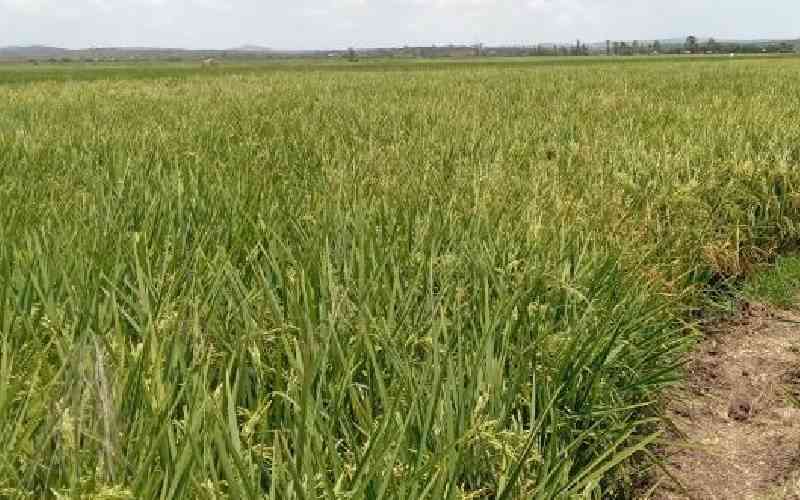There is no shortage of protein in Kinshasa’s Gambela Market, from cows to antelope and snakes. But it is the blue and silver bowls brimming with twitching crickets, termites and slithering mealworms that do the briskest trade.
Experts hope the love of edible insects in Democratic Republic of Congo may hold the key to tackling widespread hunger among its roughly 65 million people by scaling up a millennia-old consumption habit.
Six-and-a-half million people live in food insecurity in the giant central African country, according to the World Food Programme (WFP), largely due to low agricultural productivity and persistent violence in its volatile east.
Edible insects, which are just starting to win acceptance in the West, have long been one of Congo’s most popular dishes. Often served as bar food or on special occasions, they are grilled and commonly served with hot pepper, lemon and onions.
“This is the main food of Congolese,” said Marie-Colette Bena, who sells clothing at the market, “I’m proud to eat that food.”
The average household in the capital Kinshasa consumes about 300 grams of caterpillar a week, according to a UN study but insect supplies can be seasonal and are generally more expensive than other types of food.
In Kinshasa a kilogramme of crickets costs about $50, more than twice the price of beef.
Congo’s environment ministry and the UN Food and Agriculture Organisation (FAO) hope to capitalise on Congo’s affinity for the crunchy fare with a new programme to promote insect cultivation, a plan that could make them more widely available and bring down prices.
The project, due to begin in October, will train 200 people —most of them women — in western Congo to cultivate caterpillars and crickets. Laurent Kikeba, who oversees the project for the FAO, said it would be the first of its kind in the world.
A national centre to promote insect harvesting will be launched and the FAO will work with the government to craft legal norms to regulate the sector.
Ideal food
Though the FAO estimates that Congolese consume 14,000 tonnes of insects each year, Kikeba said there are no farms specifically dedicated to raising them. Instead, they are collected by hacking down trees or digging deep into the soil.
Kikeba said that year-round farming could dramatically increase production, currently limited by seasonal variations in the availability of different species.
“For the fight against malnutrition, this is an ideal food,” said Paul Monzambe, a professor of agronomy at the National Pedagogic University (UPN) in Kinshasa, who is collaborating on the project. “The crisis is such that we must think now of all possible approaches.”
In a 2013 report, the FAO hailed insect cultivation as a practical and environmentally-friendly tool to boost food production as supply struggles to keep pace with global population growth.
Stay informed. Subscribe to our newsletter
The report notes insects are bountiful, widely consumed and contain high levels of protein, fat, vitamins, fibre and minerals. They tend to require less feed and yield more meat per kilogramme than traditional protein sources.
Insects can also be raised in confined spaces with little capital investment, lowering barriers to entry for women, who struggle to access land and credit, the report said.
Increased production should start to drive down prices, allowing Congolese to consume more of their preferred delicacies. That’s music to Monzambe’s ears.
“I am a huge consumer,” he laughs. “I can’t go a week without eating them!”
Insects are a delicacy in Democratic Republic of Congo.
Interestingly, the creatures sell for twice the price of beef in the market.
Now experts hope insects could hold the key to tackling food crisis.
 The Standard Group Plc is a
multi-media organization with investments in media platforms spanning newspaper
print operations, television, radio broadcasting, digital and online services. The
Standard Group is recognized as a leading multi-media house in Kenya with a key
influence in matters of national and international interest.
The Standard Group Plc is a
multi-media organization with investments in media platforms spanning newspaper
print operations, television, radio broadcasting, digital and online services. The
Standard Group is recognized as a leading multi-media house in Kenya with a key
influence in matters of national and international interest.
 The Standard Group Plc is a
multi-media organization with investments in media platforms spanning newspaper
print operations, television, radio broadcasting, digital and online services. The
Standard Group is recognized as a leading multi-media house in Kenya with a key
influence in matters of national and international interest.
The Standard Group Plc is a
multi-media organization with investments in media platforms spanning newspaper
print operations, television, radio broadcasting, digital and online services. The
Standard Group is recognized as a leading multi-media house in Kenya with a key
influence in matters of national and international interest.









